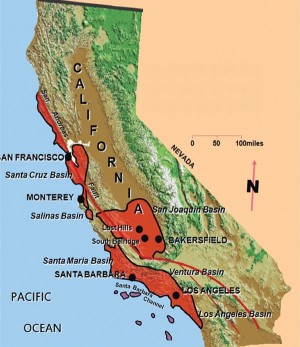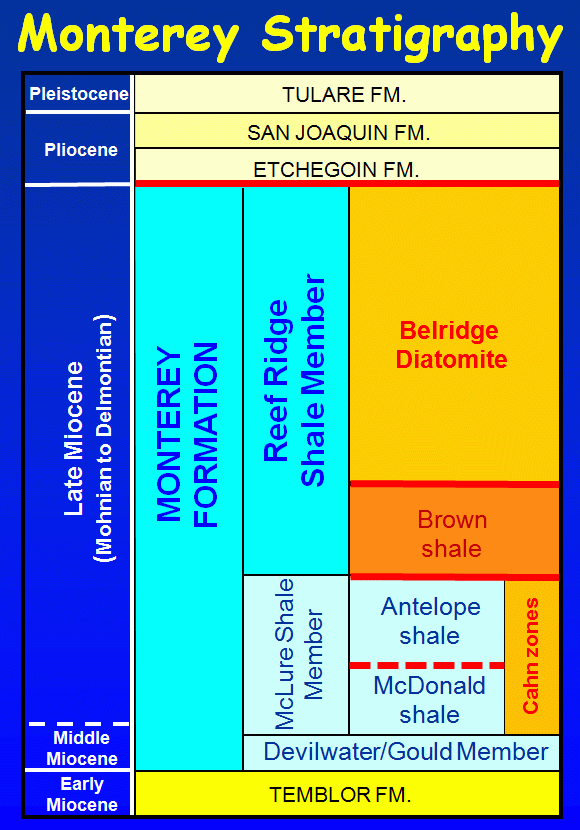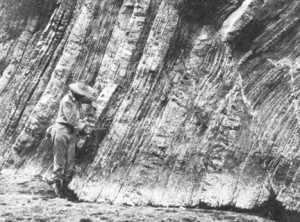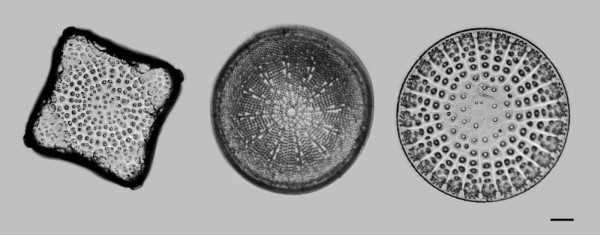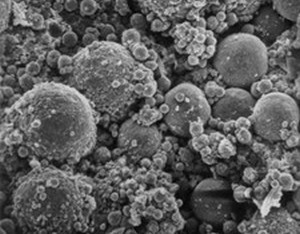The Monterey Formation
|
The Monterey diatomites and shales are replaced in some parts of the basin by age-equivalent sandstones that were rapidly deposited in a deep-marine setting by high-energy, sand-rich turbidity currents. Turbidite sandstones encased within the Reef Ridge Shale Member are known as the Potter, whereas turbidites encased within the older Antelope Shale are known as the Stevens. Because the Stevens and Potter were deposited by turbidity currents, they can be found out in the center of the basin. This makes the Stevens and the Potter quite different than the shallow-marine to non-marine sandstones that make up most of the reservoirs in the valley, as the shallow-marine sandstones will always be adjacent to the ancient shorelines. Both the Potter and Stevens are important oil reservoirs in the valley, and they are referred to as sand facies of the shales that enclose them. Thus, the Stevens is a sandstone facies of the Antelope Shale Member of the Monterey, and the Potter is a sandstone facies of the Reef Ridge Shale Member. It all gets quite confusing, and understanding, and unraveling the complex terminology of the rocks of the San Joaquin Valley is one of the challanges that geologists working here must contend with. A map showing places in California where the Monterey crops out is shown on the right. The Monterey Formation also has lots of fossils in it, and a few of the better known ones are shown below. We have also provided two links (the buttons below) that have additional information on the Monterey. |
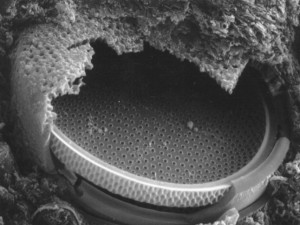 Monterey Diatom -probably of the genus Thalassiosira |
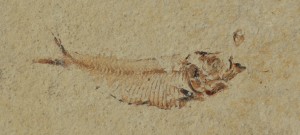
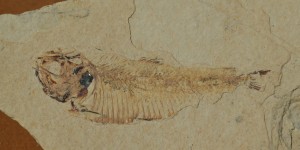
Fish Imprints |
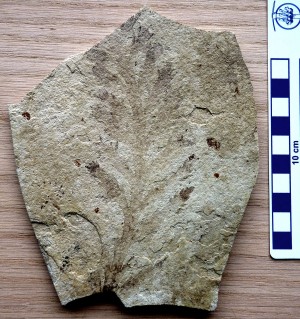 Seaweed imprint |
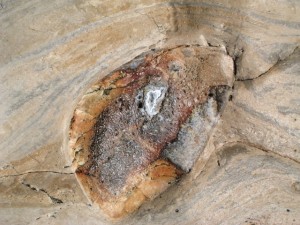 Whale bone photo by Rick Behl |
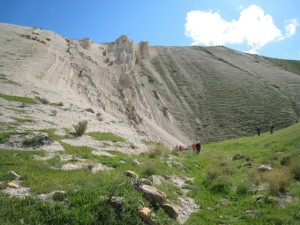 Antelope type section (Chico-Martinez Creek) photo by Rick Behl |
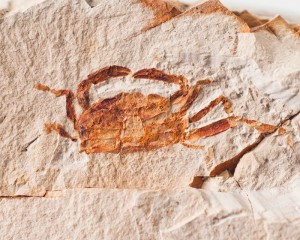 Crab (Pinnixa galliheri) |
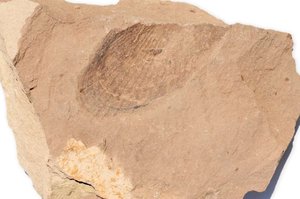 Pelecypod |
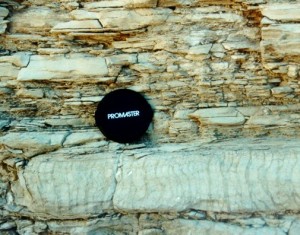 Tiger-stripe diatomite (Intrastral Microfractured Zones) |

